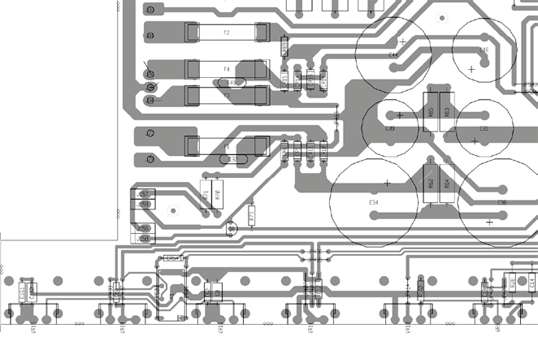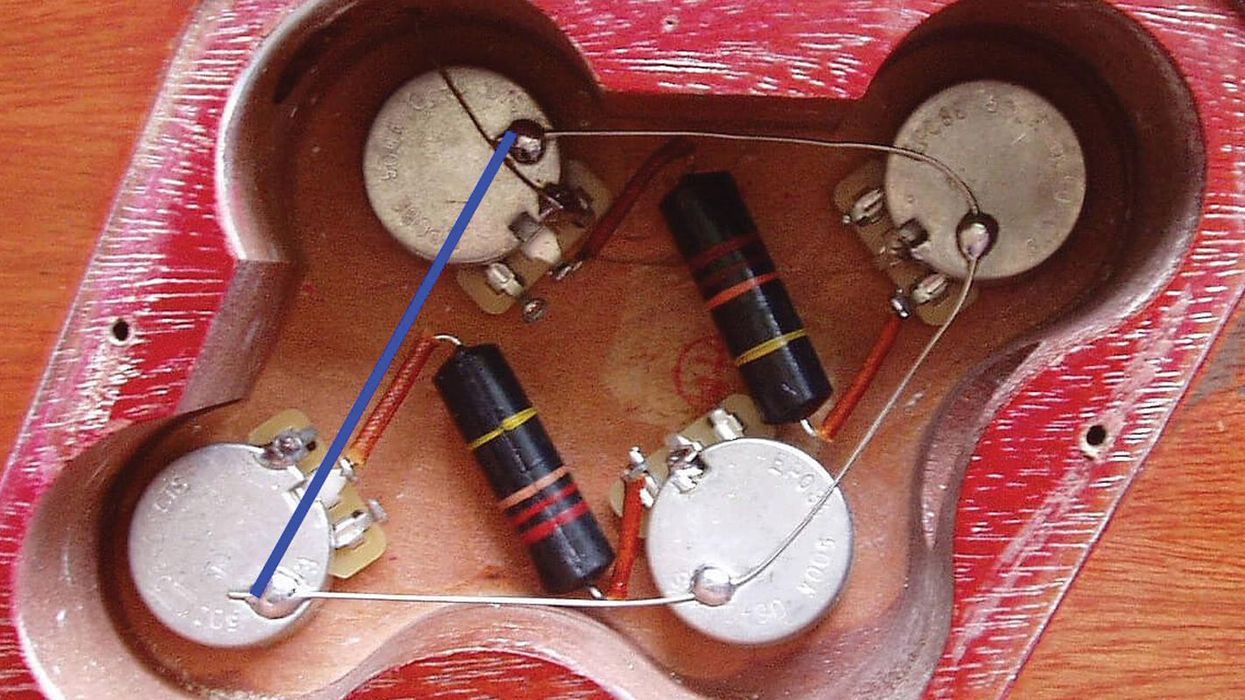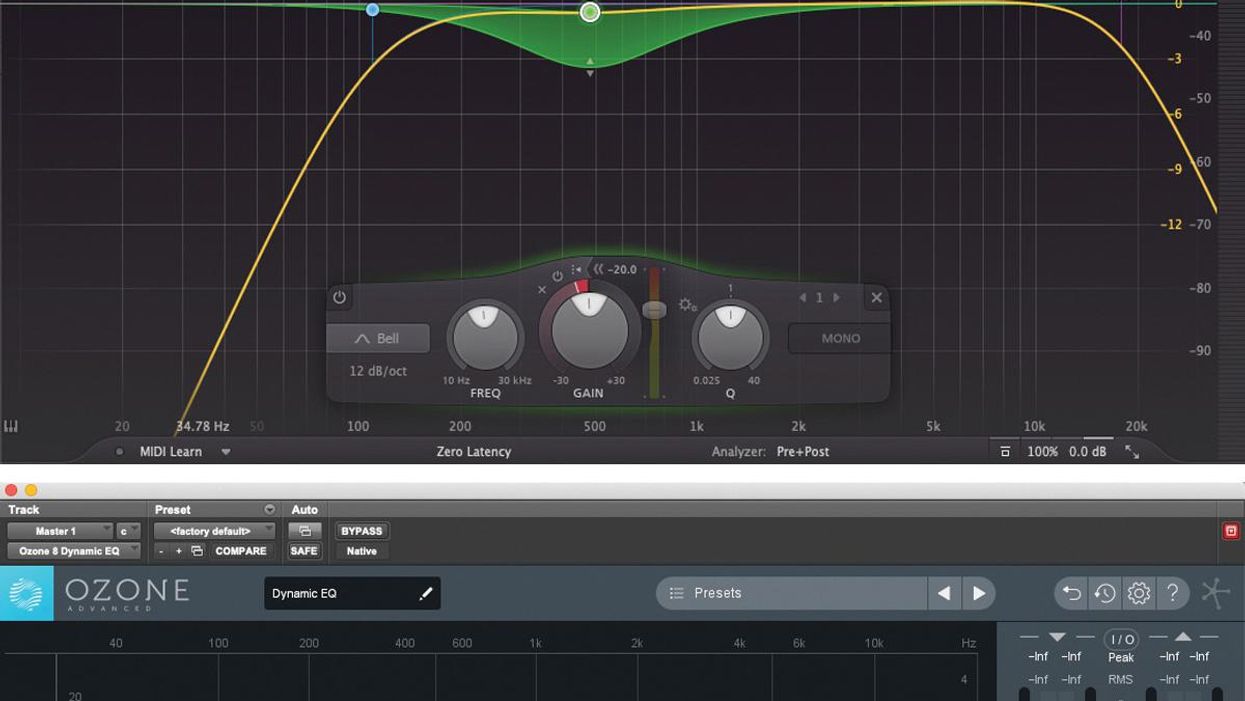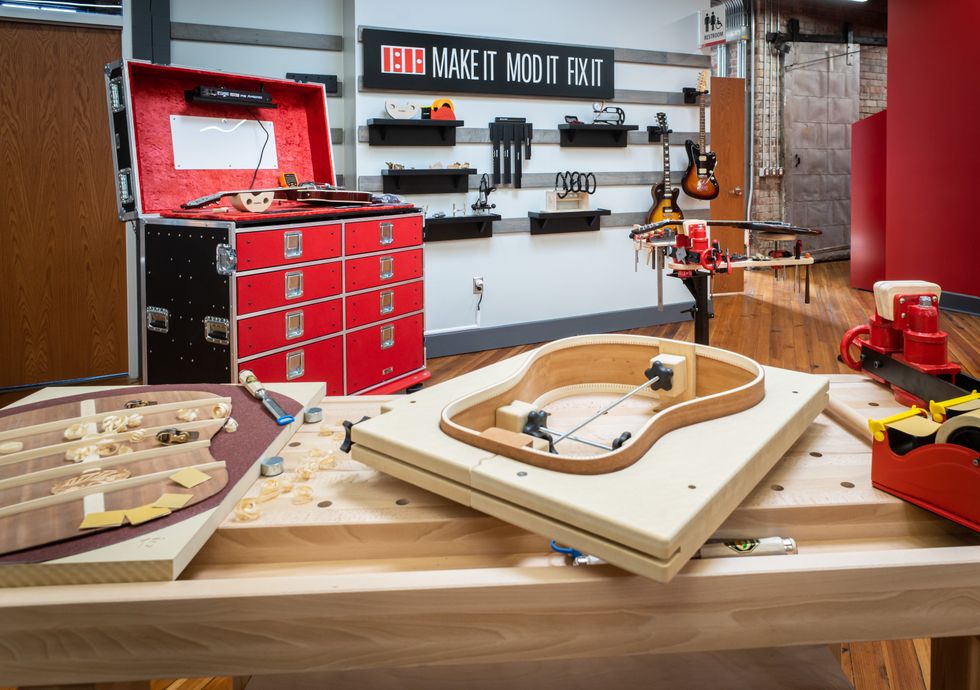| Hey Jeff, I just finished reading your column in Premier Guitar. Great column by the way! But I was wondering if you could finally be the person to help me? My question is, I just finished installing and wiring up a choke in place of the 400 ohm power resistor in my Peavey 6505+ head, and as far as I know it is located in the correct spot (between the screen and plate) from everyone I’ve talked to. But I must be missing something when I did this swap because when I put the head back on standby after playing it for awhile I get a “pop” when I throw the standby switch on. Could you please advise me on just what I may be missing in this conversion to the choke? The choke is from Mercury by the way. Thanks for your valuable time. Scott |
Hi Scott,
Thanks for your question and thanks for reading Premier Guitar.
If you installed the choke across the two terminals on the output board where the 400 ohm resistor was removed, then it is installed in the correct location in the circuit. And you are correct; this is between the main B+ supply to the output transformer and the screen grid supply. I don’t believe you “missed” anything here, but installing the choke may have changed the operation of the power supply slightly. Let me attempt to explain what I believe is happening and then pose a potential solution.

The configuration of the power supply in the 6505+, as well as in some other Peavey amplifiers, is slightly different than the standard configuration in most other manufacturers’ guitar amps. In most standard power supply configurations, when the standby switch is engaged, each section of high voltage supply powers up simultaneously. In the power supply of the Peavey, the high voltage is constantly supplied to the plates of the output tubes regardless of the standby switch setting. The standby switch simply energizes the remaining sections of the power supply. By installing the choke in place of the resistor, you have either changed the rate at which the later sections of the power supply respond to being energized or de-energized by the standby switch, or the choke is causing a spike in the power supply due to a collapsing or expanding field within the choke. You may not fully understand that explanation, but here’s the bottom line. Something is now causing a spike in the power supply and because the output tubes in the 6505+ are more “at the ready” than most other amps, they are able to reproduce this spike more quickly then an amp with a more standard power supply design. If this theory is correct and that is what’s happening, I may have a solution. It requires a bit of rewiring, but I believe it will solve the problem. Before you attempt this rewiring, please read the following disclaimer:
| If you are not familiar with working around potentially lethal voltages and do not know the proper safety measures that you should take, or do not know how to employ proper and safe wiring techniques, DO NOT attempt this modification yourself. Find a knowledgeable and experienced technician. |
First, trace back the two wires from the standby switch to the points on the circuit board where they’re connected. Remove the connections to the standby switch and connect those two points on the circuit board together, removing the standby switch from this point in the circuit. Next, on the side of the main circuit board where all the fuses are located, find fuse F1. Immediately to the side of F1 you’ll see two high voltage leads coming from the mains transformer. Disconnect one of these leads from the circuit board and insert the standby switch here. Either of the two leads is fine, but if you’re unsure, disconnect the lead connected to F1. Connect one lead of the switch to the transformer wire and the other end to the connection on the circuit board where the wire was removed. This will locate the standby switch at the AC input of the power supply, enabling all of the voltages to rise and fall simultaneously when you operate the standby switch. While the power supply “spike” may still happen electrically, it shouldn’t result in an audible “pop,” since the output tubes won’t be able to respond as quickly.
With the choke installation you may also notice that the amp seems a bit louder or has more gain. This is not solely due to the characteristics of a choke, as opposed to a resistor in the power supply, but it is due to the fact that the voltages in the amplifier may have risen slightly. The DC resistance of the choke is probably lower than the 400 ohm resistor it has replaced, causing voltages subsequent to the choke to rise.
There you have it. Hopefully, this will give you noise free operation of your standby switch, and we can save the Pop Phenomenon for the media!
Jeff Bober
Co-Founder and Senior Design Engineer – Budda Amplification
jeffb@budda.com
budda.com
©2008 Jeff Bober























 The Allparts team at their Houston warehouse, with Dean Herman in the front row, second from right.Photo by Enrique Rodriguez
The Allparts team at their Houston warehouse, with Dean Herman in the front row, second from right.Photo by Enrique Rodriguez